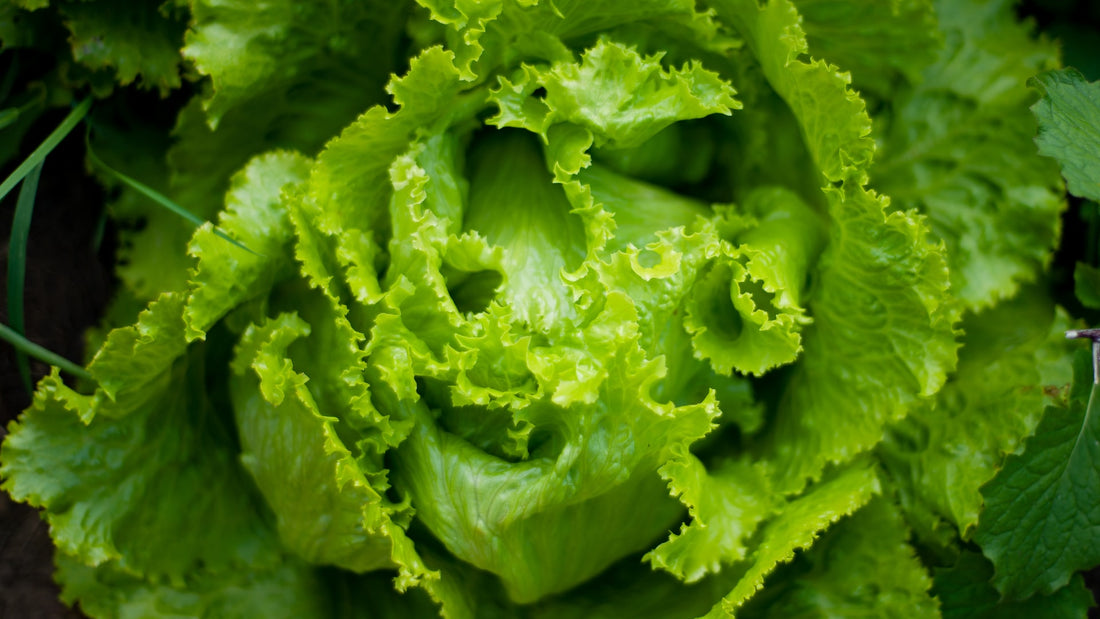How many lettuce varieties do you know? Did you know there are literally hundreds of types? Relying on the grocery store for exciting lettuce will have you waiting a long time. It's time to up your lettuce game! Lettuce is a super easy green to grow, and it's fast, meaning you can be welcoming fresh crops in as little as 30 days. Your salad bowl awaits!
The Four Main Categories of Lettuce
Leaf
These lettuce varieties grow individual stalks, which are harvested one by one. The harvesting doesn't disrupt the growing process; in fact, it encourages the plant to produce more. Leaf lettuce is the easiest of the types to grow. It is extremely perishable and should only be harvested right before use. Within the leaf lettuce category, there are three types – red, green, and oak.
Romaine
Most folks are familiar with this tall, crunchy lettuce. Romaine grows upright in dense, oval-shaped heads. Its texture and crunch make it very popular.
Butterhead (Round)
Appropriately named, the light yellow-green leaves of this type are buttery in taste and appearance. The heads are loosely shaped, and there are two types within the category: Boston and Bibb.
Iceberg
Appreciated for its large globe-shaped size and long storage time, iceberg lettuce is mildly flavored and a grocery store staple. It is the most common type in store because of its long shelf-life. Growing iceberg lettuce isn't the easiest, so only take on this one if you're up for a challenge.
How To Grow Lettuce, Step By Step
One of the best things about growing lettuce is that it can be planted and harvested successively. Plant a new crop every two weeks, and you'll always have fresh lettuce greens for your salads, sandwiches, and lettuce wraps. Lettuce is also highly adaptive and will grow outdoors, indoors, and in greenhouses.While it grows readily where it is planted, it doesn't transplant well. Plan on sowing seeds in the location it will be growing. Outdoor lettuce crops can be started in the spring, as soon as the ground can be worked. As early as possible! Lettuce prefers and grows best in cool weather.
- Tiny lettuce seeds are next to impossible to sow individually. The best method is to broadcast them thinly over the prepared space. When they sprout, they can then be thinned.
- Plant spring crops in full sun. Later on, when the summer heat gets intense, sow seeds in partially shaded locations.
- Space rows 10-12" apart and cover the seeds with 1/4" of soil.
- We love using lettuce seed mixes or making our own combinations for a colorful and fun lettuce patch.
- Water the seeds lightly every day until they sprout.
- When the seedlings reach 2" tall, thin them to 6-8" apart. Don't neglect to thin them. Crowded plants won't grow well as they compete for nutrients and space.
- Lettuce roots are shallow, so use caution while weeding and watering. Consistent light watering is the best method.
- Don't forget to plant a new crop every two weeks!
- Leaf lettuce is ripe for harvest when the leaves are 5-6" tall. Remove them one by one, starting with the outer leaves and working inwards. The plant will keep producing for weeks as long as you are consistent with harvesting.
- The Butterhead lettuce variety can be harvested when it forms a loose head and the leaves cup inward. Cut the entire head off at the base of the plant.
- Romaine is ready for harvest when it forms a tight head, and the leaves are at least 6-8" tall. You can harvest individual leaves or cut the whole head off at the base.
- Iceberg lettuces can be harvested when it forms a round, dense, tight head. Cut the entire head off at the base.
Harvesting Tips:
When you see tall stalks coming up out of the center of your plants, harvest all remaining leaves immediately or pull up the plant. Once the plants go to seed (the tall stalk), their leaves become unbearably bitter and aren't very fun to eat.
Lettuce leaves taste best when harvested young and tender.



